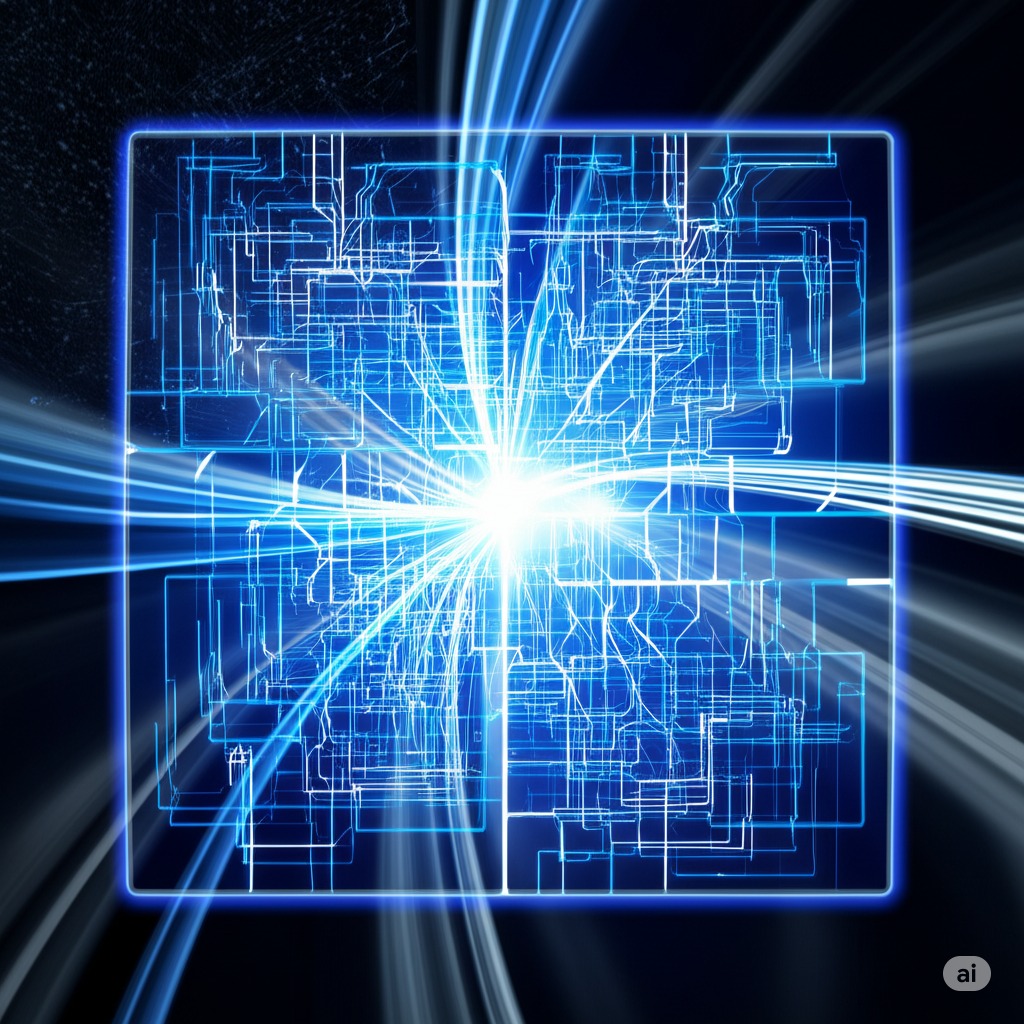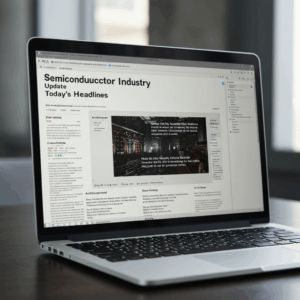Introduction.
During the week of September 28-October 4, 2025, the AI industry saw a series of important news events that are important for the future direction of the industry. These developments strongly suggest that AI technology is moving out of its experimental phase and into the era of full-scale industrial applications. The impact on the manufacturing industry in particular is immeasurable, foreshadowing the arrival of a new industrial revolution.
OpenAI’s $500 Billion Valuation: A New Era for the AI Industry
On October 2, news broke around the world that OpenAI had achieved an extremely high corporate valuation of $500 billion through the sale of employee stock (The New York Times). This is the world’s highest value for a privately held company, surpassing Elon Musk’s SpaceX, which more than tripled from $157 billion in just 12 months to a valuation of $500 billion, made possible by the purchase of $6.6 billion in stock by investors such as SoftBank and Thrive Capital. The company’s value has more than tripled from $157 billion in just 12 months.
This growth is not just a speculative frenzy; OpenAI’s estimated annual revenue will reach $4.3 billion in the first half of 2025 alone, creating substantial business value along with the proliferation of ChatGPT. From a manufacturing perspective, this represents the evolution of general-purpose AI from a research subject to a practical business tool.
Microsoft’s Strategic AI Infrastructure Enhancement
Microsoft Azure announced the general availability of GPT-5 in October 2025, enhancing its enterprise AI platform (Dynamics Edge). Of particular note is the start of the public preview of the Microsoft Agent Framework. This is an open source toolkit that enables the construction of multi-agent systems in which multiple AI agents work in concert.
In terms of applications to the manufacturing industry, this technology will drive the realization of AI agent networks that autonomously manage various processes in a factory. For example, a future in which each agent responsible for quality control, inventory control, and production planning interoperates with each other to optimize the entire factory under human supervision is in sight.
The general availability of the “Voice Live API” has also facilitated the construction of real-time voice-enabled AI agents. This has created an environment in which workers can interact with robots and manufacturing equipment in natural conversation to give work instructions and status reports.
Physical AI: A New Paradigm for Manufacturing
The white paper “Physical AI: Powering the New Age of Industrial Operations,” published by the World Economic Forum, marks the arrival of a new era in which AI technology will merge with the physical world (World Economic Forum). Physical AI refers to the ability of AI to recognize and learn about the physical world and perform a wide range of tasks while adapting to complex environments.
While traditional industrial robots have been limited to fixed and repetitive tasks, Physical AI is bringing the following advancements
- From Rule-Based to Training-Based The new generation of robots will leverage machine learning and AI to learn from simulations and real-world experience. This enables them to handle variable tasks that were previously impossible.
- The Rise of Context-Based Robotics Robots equipped with high-resolution cameras and tactile sensors can now “see” and interpret their environment in real time. Powerful AI infrastructure models are generating output from natural language prompts and integrating vision, language, and behavior to make autonomous decisions.
Successful Practical Case Amazon operates more than 1 million robots in 300 distribution centers and has achieved 25% efficiency gains and 10% movement efficiency improvements. In addition, the test site also achieved 30% skilled job creation.
Foxconn is transitioning to a “scalable AI-driven robotic workforce,” with digital twin technology reducing new system deployment time by 40%, AI robots improving cycle time by 20-30%, reducing error rates by 25%, and reducing operating costs by 15%.
Quantum AI: A Revolution in Energy Efficiency
A quantum reinforcement learning system presented by a Korean research team has reduced energy consumption in residential HVAC (air conditioning, ventilation, and heating) systems by more than 60% compared to conventional methods (The Quantum Insider). This technology could have a significant impact on energy conservation in the manufacturing industry.
Factory air conditioning and cooling systems account for a large percentage of overall energy consumption, and the application of this quantum AI technology paves the way for the manufacturing industry to achieve significant cost savings and reduce environmental impact at the same time.
Accelerating the Industrial AI Revolution in Japan
On October 3, Fujitsu and NVIDIA announced the expansion of their strategic collaboration (Fujitsu). The collaboration consists of three key elements
- Self-evolving AI agent platform Aiming to develop and provide AI agents for specific industries such as healthcare and manufacturing, we will optimize NVIDIA NeMo and Fujitsu Takane AI models to provide AI agents that evolve and customize autonomously according to customer needs. The AI agents will be provided by optimizing NVIDIA NeMo and Fujitsu Takane AI models.
- Next-generation computing infrastructure We will jointly develop a high-speed, advanced next-generation computing infrastructure that combines Fujitsu’s cutting-edge FUJITSU-MONAKA series CPUs and NVIDIA’s high-performance GPUs using NVIDIA NVLink-Fusion.
- Utilization of Digital Twin and Physical AI We aim to accelerate the use of digital twin in manufacturing, utilize physical AI including robotics to solve labor shortages, and promote human innovation.
This collaboration is expected to create world-leading examples of AI applications in the Japanese manufacturing industry. In particular, plans have been presented for global expansion, beginning with the manufacturing sector, where Japan has strengths.
Specific application and impact on manufacturing
Integration of the Digital Twin and Metaverse The integration of the industrial metaverse and the digital twin has allowed the manufacturing industry to benefit from
- Virtual factory planning: Optimize layout in a fully virtual environment before building a new factory
- Predictive maintenance: Predict equipment failures in advance and perform planned maintenance
- Worker Training: Safe Skills Acquisition in VR/AR Environments
- Real-time optimization: Dynamic process adjustment based on production status
Practical Application of AI Robotics Collaborations between NVIDIA, Universal Robots, KUKA, and others have resulted in the following innovations
- Advanced collaborative robots (cobots): Next-generation cobots, such as UR15, are significantly faster than their predecessors.
- AI Vision System: Real-time quality inspection and automated sorting
- Autonomous mobile robot: Complete automation of in-plant logistics
- Multitasking: One robot can handle multiple processes
Increased productivity and efficiency The following results have been reported in actual case studies
- Cycle time reduction: 20-30% improvement
- Error rate reduction: 25% quality improvement
- Operational cost reduction: 15% cost reduction
- Energy efficiency: potential to reduce consumption by 60% or more
Challenges and Future Prospects
technical problem
- Infrastructure development: High-performance computing environment for AI system operation
- Data quality: collection and management of high quality data for learning
- System integration: Effective integration of existing facilities and AI systems
social issue
- Workforce transformation: changes in employment structure due to automation of simple tasks
- Skills retraining: learning new skills needed to work with AI
- Response of SMEs: Concerns about the widening gap in AI adoption between large and small companies
Future Outlook Expected developments in 2025 and in the coming years:
- Achieving General Purpose AGI (Artificial General Intelligence): Some Experts Predict Singularity to be Reached by 2026
- Inter-industry collaboration: building an ecosystem of AI agents working together across industries
- Sustainability: Using AI to Reduce Environmental Impact and Create a Circular Economy
- Global Competition: Determining Manufacturing Competitiveness through National AI Strategies
summary
The week of September 28-October 4, 2025, was a period that once again demonstrated the potential of AI to fundamentally change the way industries, especially manufacturing, operate: OpenAI’s enterprise valuation showed the market’s promise, and Microsoft Azure’s strategic enhancements cleared the path to practical implementation. The rise of Physical AI, in particular, portends a paradigm shift in the manufacturing industry.
Japanese companies are trying to capture this trend and establish a leading position in the world, as in the case of the collaboration between Fujitsu and NVIDIA. Manufacturing is evolving from mere automation to intelligent, autonomous systems, including the possibility of an energy efficiency revolution through quantum AI.
However, along with technological innovation, it is also important to address social issues such as workforce retraining, SME support, and ethical use of AI. The entire manufacturing industry must work together to build a sustainable development model in which the benefits of AI technology can be widely shared.
In the coming years, AI is certain to become a paramount factor in determining the competitiveness of the manufacturing industry. We need to keep up with this wave of change, while at the same time maintaining a human-centered approach to building a new future for manufacturing.
Source List
- OpenAI Completes Deal That Values It at $50 Billion – The New York Times
- Azure OpenAI News Today October 2025 – Dynamics Edge
- What is physical AI — and how is it changing manufacturing?
- Scientists Report Quantum AI Could Cut Home Energy Consumption – The Quantum Insider
- Fujitsu expands strategic collaboration with NVIDIA – Fujitsu Global
- NVIDIA Partners Showcase Cutting-Edge Robotic and Industrial AI Solutions – NVIDIA Blog
- 8 Key Industrial Automation Trends in 2025 – Rockwell Automation
- NVIDIA Collaborates with Fujitsu and Yaskawa Electric on “AI x Robot” Production Reform with Japan – Nikkei
- Japan Collaborative Robotics Market Soars to US$5.745 Billion – @Press
- IFR “World Robotics 2025” Industrial Robot Statistics for 2024 – Automation Newspaper


